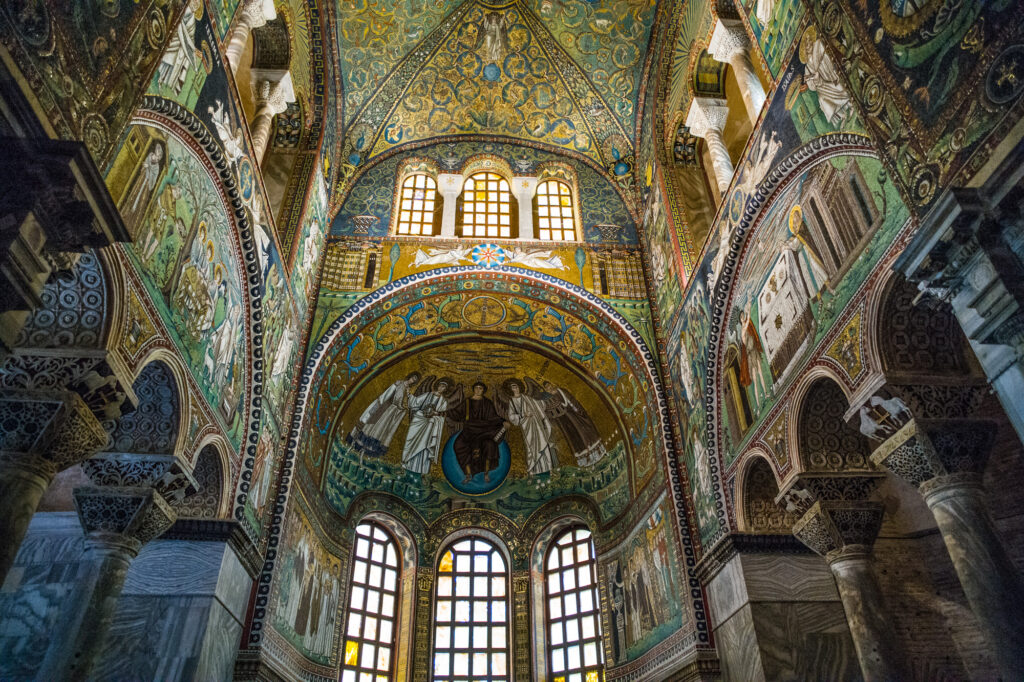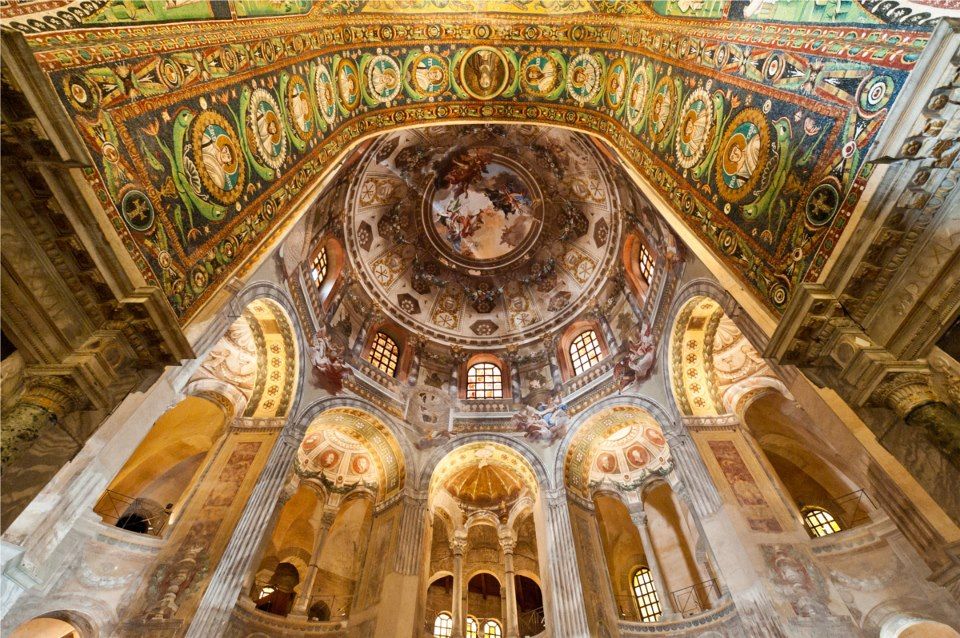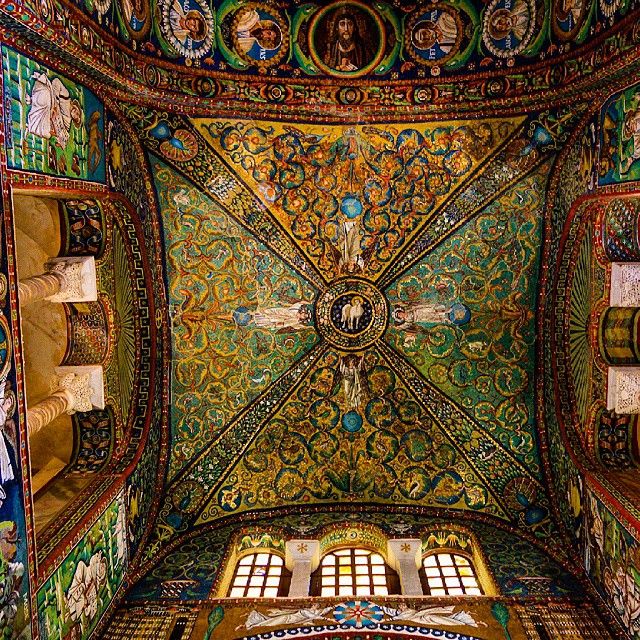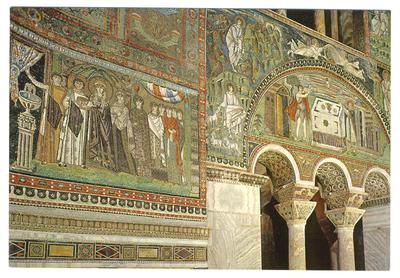
The Basilica of San Vitale is an early 6th century church with an octagonal shape. The structure contains a smaller octagon which rises high above the building. The church was considered a masterpiece of Byzantine architecture.

The Church at Ravenna is circular, instead of having a longitudinal axis, like gothic churches. The exterior of the church is made up of bricks that were taken from ancient Roman buildings and reused in the 6th century. The walls are covered with lots of windows.
Light coming through the windows shimmered on the gold, the marble and on the mosaics. The interior is covered with lots of mosaics that survived from the early medieval period.

As you walk into the ambulatory the center of the church towers above you. There are apse-like arches within arches supported by columns throughout the structure on the upper and lower levels. There are multiple arches within arches on every side of the octagonal shaped building which encircles around you, as you stand in the middle of the church.

The columns are stacked upon each other providing reinforced support to the construction. Some columns are massive and rectangular, while others are cylindrical and long. All are decorated masterpieces filled with carvings and multicolored marble. Some of the columns are made of marble and gold.
The eastern end of the church is completely covered with dense mosaic. The walls are covered with tiny pieces of colored glass and glass covered with gold.

There are three windows in the apse on the eastern end. Above the windows there is a mosaic of Christ dressed in royal purple and sitting on an orb. This may signify the orb of the universe. On either side of Christ are two angels. Below Him are the 4 rivers of paradise. Christ is holding the book of the apocalypse in His hand, with the seven seals visible.

In the right hand of Jesus, He is handing a crown to Saint Vitalis, who was adopted as the primary martyr to the city. On the left side of Christ is another angel. Beside that angel stood Bishop Ecclesius (Eclesivspis) who handed the church over to the angel beside Christ. Bishop Ecclesius founded the church in 526. Funding was sponsored by Julius Argentarius, a banker and architect. The church was completed in 547 by Bishop Maximian.

Every surface of each apse in the building is covered with imagery and figures and decorative patterning. The marble used throughout the church has ornate patterns and rich unique colors. In the center of the church, above the alter, is a picture of the Lamb of God with a halo over His head. On the four sides of Him are angels blended into ornamental patterns made up of various colors. The scene represents the victory of Christianity.
Included throughout the apses are pictures of scenes from the Old Testament and the New Testament. There is also another picture of Christ, this time with a beard and looking older. Pictured with Him are the 12 apostles.

The Basilica also contains a mosaic of the East Roman Emperor Justinian I. The is also a mosaic of his wife the Empress Theodora. These mosaics were added in 547. It is said that the Basilica at San Vitale had over 4 acres of mosaics. Many have been lost to time and circumstance. We can see what is left. I can only imagine the beauty that was lost.

